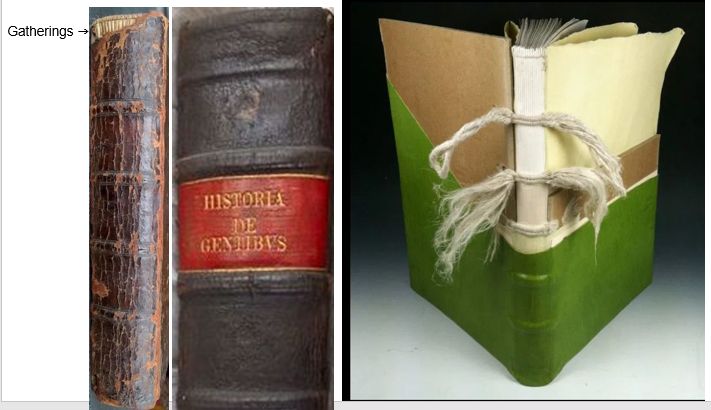

 |
Page
31
|
| The gatherings are then collected together. In
early books these would be tied together with cords and when the book is
bound you can see the ridges on the spine where the cords are. Then the
edges of the pages have to be cut with a knife. This produced a ragged edge
which is a rather nice feature of older books. Sometimes you comes across
books where the pages have not been cut. This was a bit of a give-away in
a book at Charlecote that had been a present to Christina Cameron Campbell.
It was Lyle’s Antiquity of man. She had signed her name Tina inside
the cover but had clearly not managed to read the whole of the book. We
all get presents of books chosen by others that do not particularly appeal!
Later the edge of pages would be cut by machine which gives a smooth edge. These books bound with cords are really tough. The gatherings are bound to the boards as shown on the right. A cheaper way of producing a book was simply to glue the pages into the
spine. At first the glues were cold glues but over time these dried out
and the pages would fall out. I have brought an illustrated bird book
from the 1830s where you can see this (there is also a copy in the Charlecote
library). The DuPont Company invented the hot-melt adhesive binding process
in the 1940s and this is what is used for producing paperbacks. These
were first produced in 1931 by the German Albatross books. Penguin Books
in England followed suit in 1935, and Pocket Books brought the trend to
America in 1939. The boards of a book can be covered in a number of things. Many are covered
in Leather because it was plentiful, flexible (pliable) and could be artistically
tooled. The most common is calf. It is the nature of the bindings that gives the beauty and attractiveness
to old books making many of them sought-after collector pieces. Just look
along the Charlecote shelves. |